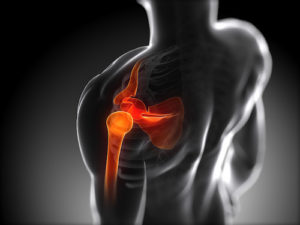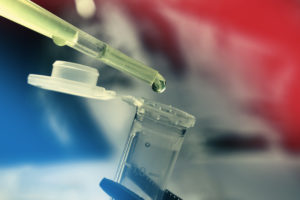Stem Cell Assisted Shoulder Surgery
 Shoulder pain may result from several conditions including tendonitis, bursitis, arthritis, labral tears, fractures, dislocations or sprains and strains. While a lot of these conditions with chronic shoulder pain are successfully treated nonoperatively, an unfortunate percentage will fail and need to consider a surgical procedure.
Shoulder pain may result from several conditions including tendonitis, bursitis, arthritis, labral tears, fractures, dislocations or sprains and strains. While a lot of these conditions with chronic shoulder pain are successfully treated nonoperatively, an unfortunate percentage will fail and need to consider a surgical procedure.
Thankfully, stem cell assisted shoulder surgery now has a significant body of research detailing the benefits of the biology in helping patients heal better, and faster!
When it comes to rotator cuff repair, there is a very high failure rate both in the short and long term at the area where the tendon is re-attached to the bone. Studies have shown the failure rate to range 20-90% in various studies! The worse the tear, the higher the retear rate.The main reason for this is when left to heal after repair, the human body tends to form considerable scar tissue and fatty infiltration occurs. No one wants or needs that, but it’s common.
 When biologic augmentation is utilized with stem cell regenerative materials, the outcomes are dramatically different. A 2014 study looking at rotator cuff repair augmented with stem cells showed an improvement of the healing rate to 100% by six months, versus only 67% without. Interestingly this same study showed that at the ten year follow up time point, 87% of the stem cell augmented patients maintained intact rotator cuffs, versus only 44% in the conventional group.
When biologic augmentation is utilized with stem cell regenerative materials, the outcomes are dramatically different. A 2014 study looking at rotator cuff repair augmented with stem cells showed an improvement of the healing rate to 100% by six months, versus only 67% without. Interestingly this same study showed that at the ten year follow up time point, 87% of the stem cell augmented patients maintained intact rotator cuffs, versus only 44% in the conventional group.
Rotator cuff tears have a terrible effect on the natural ability to heal. A hostile non-healing environment results, and when a conventional repair is performed it gets even worse. Doctors writing in the Orthopedic Journal of Sports Medicine stated, “Tears within the tendon substance or at its insertion into the humeral head represent a considerable clinical challenge because of the hostile local environment that precludes healing.”
The goal, then, with stem cell augmentation is to turn a hostile, non-healing joint environment into one that heals great. In the American Journal of Sports Medicine, a Korean group of surgeons found that using stem cells reduced retear and high surgical failure rates in the arthroscopic repair of massive rotator cuff tears.


